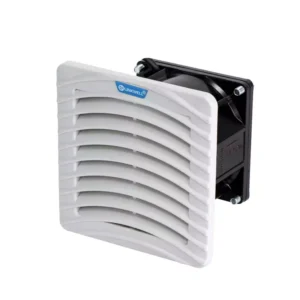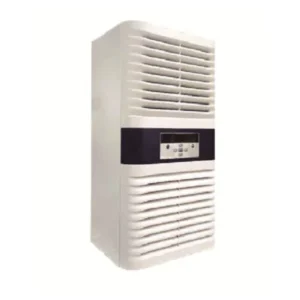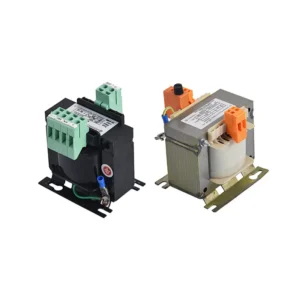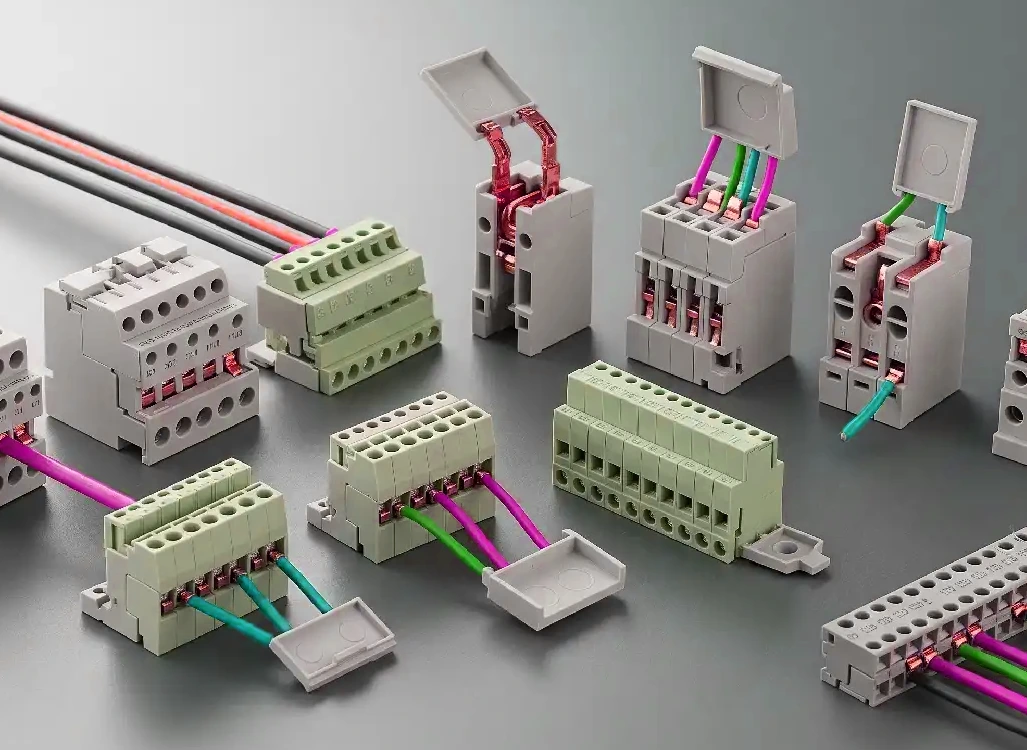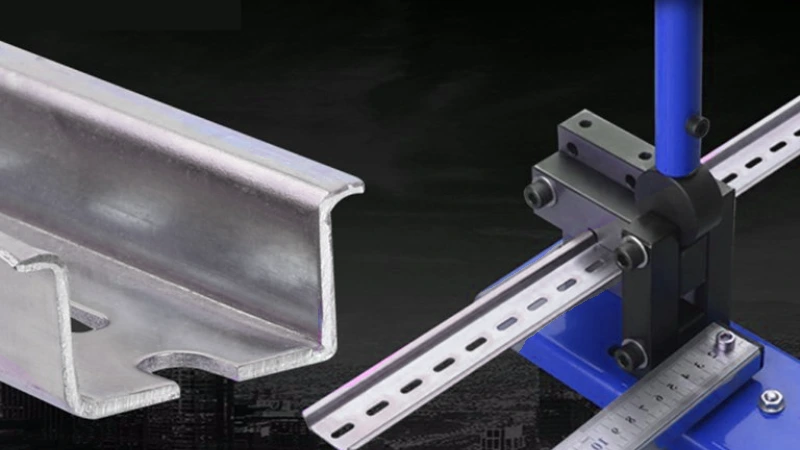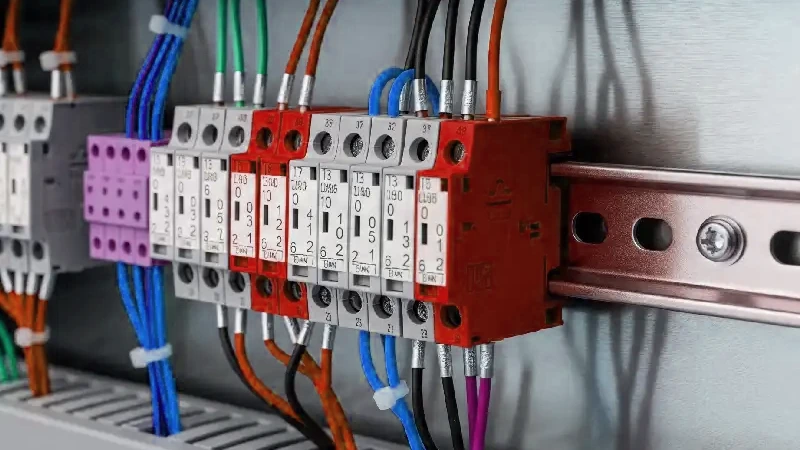Ever wondered what is a traffic cabinet? You see these sturdy boxes at busy intersections, but what is a traffic cabinet really doing there? It acts as the brain behind every signal you spot on the road. You rely on traffic cabinets to manage the flow of cars and keep every signal working smoothly. When you ask what is a traffic cabinet, think of a system that keeps traffic safe and organized. Linkwell leads the way in building reliable solutions for your city’s signal and traffic needs.
Traffic Cabinet Key Takeaways
- A traffic cabinet acts as the control center for traffic signals, managing light changes to keep intersections safe and organized.
- Inside the cabinet, you find controllers, power supplies, sensors, and communication devices that work together to control traffic flow and support remote monitoring.
- Traffic cabinets use strong, weatherproof materials and cooling systems to protect sensitive equipment and ensure reliable operation in all conditions.
- Smart traffic cabinets collect real-time data, adjust signal timing based on traffic, and help emergency vehicles move faster, reducing congestion and accidents.
- Linkwell offers customizable, durable traffic cabinets with advanced technology that supports future upgrades and keeps city traffic systems efficient and safe.
What is a Traffic Cabinet
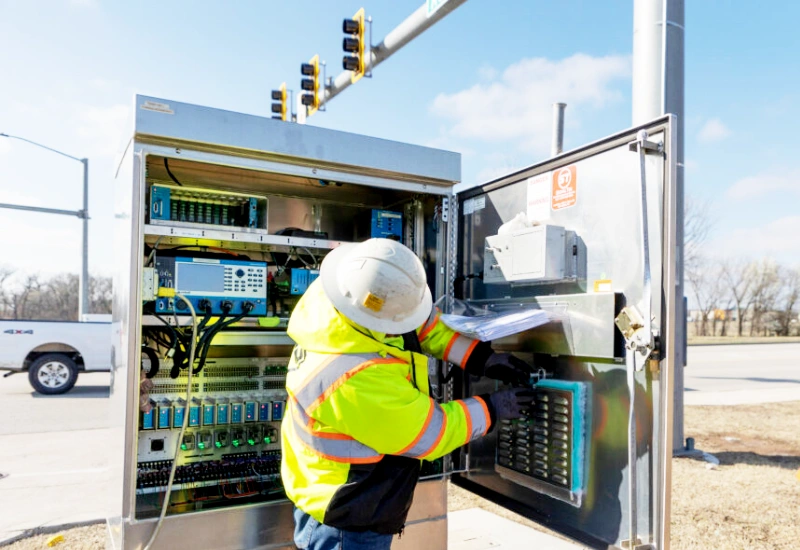
Definition and Role
When you ask what is a traffic cabinet, think of it as the command center for your intersection. This sturdy box sits by the roadside and quietly keeps everything running. Inside, you’ll find the brains of the operation—controllers, power supplies, and communication devices. These parts work together to manage the flow of cars, bikes, and people. The traffic signal cabinet makes sure every light changes at the right time, keeping you safe and traffic moving smoothly.
Transportation experts, like the Institute of Transportation Engineers, describe a traffic cabinet as a modular enclosure that holds all the equipment needed for traffic control. You get a system that supports not just basic signals, but also advanced features like sensors and remote monitoring. The cabinet’s design allows for easy upgrades, so your city can add new technology as traffic needs change.
Did you know? A modern traffic signal cabinet can even collect data and send alerts if something goes wrong. This helps city workers fix problems fast and keep intersections safe.
You’ll find Linkwell’s traffic signal cabinets built to meet strict standards. They use high-quality stainless steel or powder-coated aluminum, making them tough enough for any weather. Linkwell designs each cabinet to fit your city’s needs, offering options for cooling, power management, and advanced communication. Their cabinets meet NEMA 3R and ISO 9001 standards, so you know you’re getting reliable protection for your traffic systems.
Here’s what a traffic cabinet does for you:
- Controls traffic lights and pedestrian signals
- Houses controllers, power supplies, and sensors
- Supports remote monitoring and quick repairs
- Keeps equipment safe from weather and tampering
Location and Installation
You’ll usually spot a traffic cabinet near busy intersections, but not too close to the road. Placing it a safe distance away protects both the equipment and the people who work on it. The best spot gives workers a clear view of the whole intersection, so they can check signals and traffic flow without stepping into danger.
When it’s time to install a traffic signal cabinet, crews secure it to a solid foundation, connect the power, and seal all access points. This keeps out rain, dust, and curious animals. Linkwell’s cabinets come with easy-to-follow installation guides and support, so you can get your system up and running quickly.
Here’s a quick look at what goes into installing a traffic cabinet:
- Choose a safe, visible location away from direct traffic.
- Set a sturdy foundation to keep the cabinet stable.
- Connect power and communication lines.
- Seal all openings to protect against weather and dust.
- Test the system to make sure everything works.
With Linkwell’s expertise, you get a traffic signal cabinet that’s easy to install and built to last. Their cabinets are designed for fast delivery and simple setup, so your city can keep traffic moving with less hassle.
Traffic Signal Cabinet Components
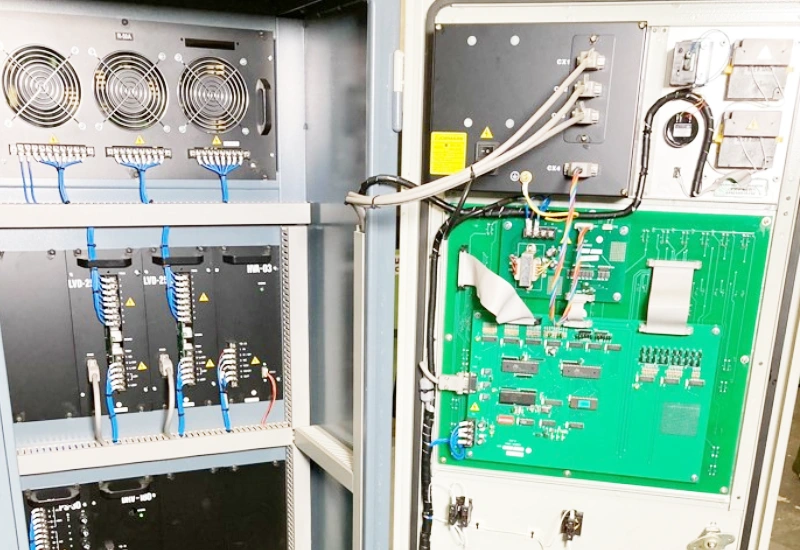
Controller Cabinet
Recommended products
When you look inside a traffic signal cabinet, you’ll see the controller cabinet at the heart of the system. This is where the traffic signal controller lives, making decisions about when each light should change. You get a sturdy, weatherproof box that protects sensitive electronics from rain, dust, and tampering. The controller cabinet gives you enough space for wiring and upgrades, so technicians can work safely and quickly. You’ll find features like surge protection, battery backup, and secure locks. These keep your signal controller cabinets running even during storms or power outages. Linkwell’s controller cabinets use corrosion-resistant materials and smart ventilation, so your system stays cool and reliable.
Tip: A controller cabinet with remote monitoring lets you spot problems before they affect traffic flow.
Power and Cooling Systems
Your traffic signal cabinet needs steady power and the right temperature to work well. Power systems include backup batteries and modular units that keep signals running if the main power fails. Cooling systems are just as important. You might see fans, air conditioners, or heat exchangers inside. These keep electronics from overheating, even in extreme weather. Linkwell offers cabinet air conditioners and cooling fans that fit outdoor enclosures, so your system stays safe and efficient.
| Cooling System Type | Description | Advantages | Suitable Conditions |
|---|---|---|---|
| Air Conditioners | Refrigeration for high heat loads | Accurate control, sealed system | Critical panels, hot climates |
| Cooling Fans | Moves air to lower temp | Low cost, easy install | Traffic control boxes, mild weather |
| Heat Exchangers | Transfers heat out | Energy efficient, silent | Dusty or moist areas |
Communication Devices
You want your traffic signal cabinet to talk to the city’s central system. Communication devices like modems, network switches, and routers make this possible. These connect your controller cabinet to servers using fiber optic, cellular, or Ethernet links. You get real-time updates, remote control, and fast troubleshooting. Advanced systems use technologies like 5G and Wi-Fi for ultra-fast data exchange. Even if the connection drops, your traffic signal controller keeps working with preset schedules.
Safety Features
Safety matters for everyone—drivers, pedestrians, and technicians. Your traffic signal cabinet uses low voltage to reduce shock risk. Surge protection and arc flash prevention keep service workers safe. Cabinets use ultra-low power LED signals, which meet energy rules and last longer. You’ll find secure locks, anti-vandalism designs, and easy-to-replace parts. Linkwell’s outdoor enclosures meet strict standards for durability and safety, so your system stays protected in any weather.
Note: Certified quality and weatherproof designs mean your traffic signal cabinet lasts for years, even in tough conditions.
How Traffic Cabinet Systems Work
Signal Control and Coordination
When you look at a busy intersection, you might wonder how all those traffic lights seem to work together. The answer sits inside the traffic cabinet. You get a system that does more than just turn lights from red to green. It uses smart coordination to keep cars, bikes, and people moving safely.
Here’s how the process works:
- The traffic signal controller inside the cabinet acts as the brain. It decides when each light should change.
- Coordination logic adds another layer. This logic manages the timing of signals across several intersections, not just one.
- The system sets a background cycle length. This means all signals follow a set rhythm, so cars can move through multiple intersections with fewer stops.
- The cabinet uses timers, detectors, and even pedestrian buttons to adjust the signal stages.
- If something goes wrong, conflict monitors step in. These fail-safe devices prevent dangerous signal combinations.
You get a traffic signal system that can run on its own or as part of a bigger network. The system can handle fixed times, flashing modes, or fully actuated control. When cities want to keep traffic flowing smoothly, they use coordination plans that let groups of cars—called platoons—move through green lights at several intersections in a row. This reduces stops and keeps everyone moving.
Tip: The effectiveness of coordination depends on how close intersections are, how fast traffic moves, and how long each cycle lasts.
Detection and Monitoring
You might not see them, but detection and monitoring tools work behind the scenes in every traffic cabinet. These systems collect real-time data to help your city make smart decisions about traffic flow.
- The cabinet manages the timing of green, yellow, and red lights based on actual traffic conditions.
- Sensors and cameras count vehicles, measure speed, and spot bottlenecks.
- The system can adjust signal timing on the fly. If one road gets busy, the green light stays on longer to clear the jam.
- Adaptive traffic signal control uses this data to reduce delays and keep traffic moving.
- Emergency vehicles get priority. The system can turn lights green for ambulances or fire trucks, improving safety.
- Remote monitoring lets city workers spot problems fast. If a signal malfunctions, they get an alert and can fix it quickly.
You benefit from shorter waits, less congestion, and safer roads. Linkwell’s advanced cooling and monitoring solutions keep these systems running smoothly, even in harsh weather. Their cabinet air conditioners and outdoor enclosures protect sensitive electronics, so your traffic signal operation stays reliable year-round.
Note: AI-powered detection can even track bikes and pedestrians, making intersections safer for everyone.
Data and Remote Access
Modern traffic signal systems rely on fast, secure data access. You get a mix of wired and wireless connections inside the cabinet. Ethernet and fiber optics offer reliable, low-latency links. Wireless options like 4G, 5G, and Wi-Fi allow for quick setup and remote access, even in hard-to-reach spots.
The system collects data from sensors, cameras, and weather stations. This information travels to cloud platforms, where city engineers can analyze trends and make improvements. Real-time data helps adjust signal timing, spot maintenance needs, and plan for future upgrades.
- Wireless traffic counters use radar, cameras, or Bluetooth to track vehicles.
- Data is sent instantly to central servers for analysis.
- Cloud-based management makes it easy to scale up and add new features.
- Security features like encryption and authentication keep your system safe from cyber threats.
You get a traffic signal system that’s always connected and ready to adapt. Linkwell’s cabinets support these advanced technologies, offering reliable power, cooling, and protection for all your critical equipment.
Did you know? With remote access, city workers can update signal plans or troubleshoot issues without visiting each intersection, saving time and money.
Importance and Benefits
Safety and Efficiency
You count on traffic cabinets to keep intersections safe and organized. These cabinets have changed a lot over the years. They now use smart technology to reduce human error and help signals work together. When you drive through a green light at a busy intersection, you experience the results of this system. Traffic cabinets adjust signal timing in real time, which keeps traffic flow smooth and helps emergency vehicles get through faster. This means fewer accidents and safer roads for everyone.
Did you know? Automated traffic cabinets can spot problems and send alerts, so city workers can fix issues before they cause delays or safety risks.
Durability and Cost Savings
You want your city’s traffic system to last. That’s why traffic cabinets use strong materials like stainless steel and aluminum. These cabinets stand up to rain, dust, and heat, so you don’t have to worry about frequent repairs. Weatherproof seals and cooling systems protect the sensitive signal equipment inside. Here’s how these features help you save money:
- Cabinets need less maintenance because they resist corrosion and damage.
- Smart layouts and modular parts make repairs and upgrades quick and easy.
- Backup power and surge protection keep signals running, even during storms.
- Predictive monitoring helps you fix small problems before they become big ones.
All these features add up to long-term savings and reliable traffic flow.
Compliance and Customization
Every city has unique needs, and traffic cabinets must meet strict standards. Linkwell designs cabinets that follow NEMA and ISO rules, so you know they’re safe and reliable. These standards cover everything from weatherproofing to electrical safety. You also get options to customize your cabinet. Need extra space for new signal tech? Want better locks or special cooling? You can choose the features that fit your city’s traffic flow and climate.
- Cabinets meet NEMA TS1 and TS2 standards for traffic control.
- ISO certifications show a commitment to quality and safety.
- Custom layouts, mounting options, and finishes let you match your city’s needs.
- Modular designs make it easy to add new technology as your traffic system grows.
Tip: Customizable cabinets help your city stay ready for future upgrades and smart traffic solutions.
Technology and Future Trends
Intelligent Systems
You see traffic changing fast, and technology is leading the way. Today’s traffic cabinets are much more than metal boxes—they’re smart hubs packed with advanced features. Artificial intelligence and machine learning help these cabinets analyze real-time data, predict congestion, and adjust signals to keep cars moving. Cities like Los Angeles use adaptive signal control to reduce jams, while Barcelona relies on big data analytics to forecast busy times and optimize flow.
Take a look at how intelligent traffic systems are evolving:
| Advancement Area | Description | City/Example |
|---|---|---|
| Artificial Intelligence & ML | AI algorithms optimize signals by analyzing traffic data in real time. | Global |
| Connected Vehicles | Cars share info with cabinets to improve flow and safety. | Global |
| Adaptive Traffic Signal Control | Signals change based on sensor data to cut congestion. | Los Angeles |
| Big Data Analytics | Data from sensors and GPS predicts patterns and improves timing. | Barcelona |
| Integration with Public Transport | Signals sync with buses and trains to reduce delays. | Singapore |
You get smarter intersections that respond to what’s happening right now. IoT devices like road sensors and cameras collect data on speed, weather, and vehicle counts. These tools help the system make quick decisions, reducing wait times and even cutting emissions.
Tip: Smart traffic cabinets can lower nighttime wait times by up to one third, making your drive smoother and safer.
Innovations by Linkwell
You want a traffic cabinet that keeps up with the future. Linkwell leads the way by designing cabinets that support AI, IoT, and edge computing. Their cabinets use rugged controllers, industrial Ethernet switches, and advanced cooling to protect sensitive electronics. You get modular designs that fit any city, plus energy-efficient features that support sustainability.
Linkwell’s cabinets act as decentralized intelligence hubs. They collect data from detectors, cameras, and weather sensors, then use AI to adjust signals for emergency vehicles or busy intersections. With 5G and edge computing, these cabinets can process data instantly and communicate with vehicles and public safety systems.
Linkwell focuses on:
- Scalable, modular designs for easy upgrades
- Energy-harvesting modules and low-power communication
- Strong cybersecurity to protect your data
- Partnerships with global tech leaders for next-gen solutions
You benefit from cabinets that last longer, save energy, and keep your city ready for tomorrow’s smart traffic needs.
You rely on traffic cabinets to keep your city moving and safe. These cabinets help cities upgrade to smart traffic systems, making roads safer and traffic smoother. When you choose Linkwell, you get more than just a box—you get global quality, innovation, and support that lasts.
| Manufacturer | Main Differentiator | Quality Focus |
|---|---|---|
| Linkwell | Global quality and innovation | High |
| E-Abel | Advanced engineering | High |
| SIC Ltd | Rapid customization | High |
| SM Control | Flexible manufacturing | High |
| WH Kemp | Rigorous testing | High |
Pick high-quality, certified traffic cabinets for your city or business. You set the stage for safer streets and a future-ready traffic network.
FAQ
What is the main job of a traffic cabinet?
You can think of a traffic cabinet as the control center for signals at intersections. It manages when lights change and keeps everything running safely. Without it, traffic signals would not work together.
How long does a traffic cabinet last?
You usually get 10 to 15 years of service from a well-built traffic cabinet. Linkwell’s cabinets use strong materials, so you can count on them for long-term reliability.
Can you install a traffic cabinet outdoors?
Yes! You can install traffic cabinets outdoors. Linkwell’s cabinets are weatherproof and resist rain, dust, and heat. You do not need to worry about harsh conditions.
What happens if the power goes out?
Most traffic cabinets have backup batteries. These keep signals working during short power outages. You stay safe, and traffic keeps moving until the main power returns.
Does Linkwell offer support after installation?
Absolutely! You get 24/7 support from Linkwell. If you have questions or need help, their team is ready to assist you any time.
Conclusion
Exploring what is a traffic cabinet is essential for safe, efficient, and modern traffic management. These cabinets act as the brain of intersections, ensuring smooth signal operation, remote monitoring, and future-ready upgrades. Linkwell provides durable, customizable traffic cabinets built with weatherproof materials, advanced cooling, and smart technology to reduce congestion and enhance safety.
Choose Linkwell’s certified solutions to improve city infrastructure, extend cabinet lifespan, and ensure reliable performance in any urban environment.

